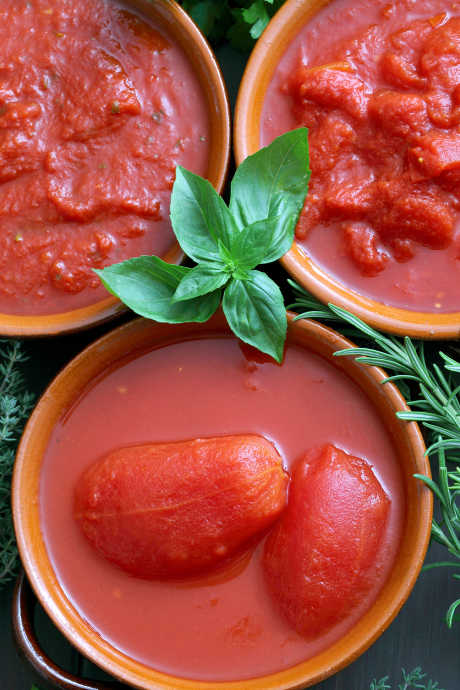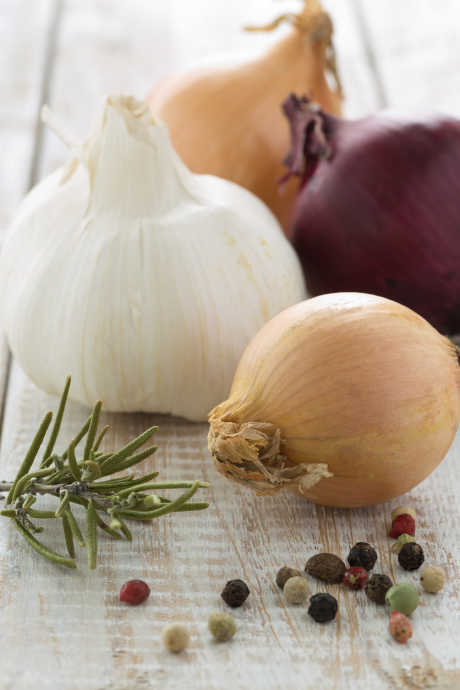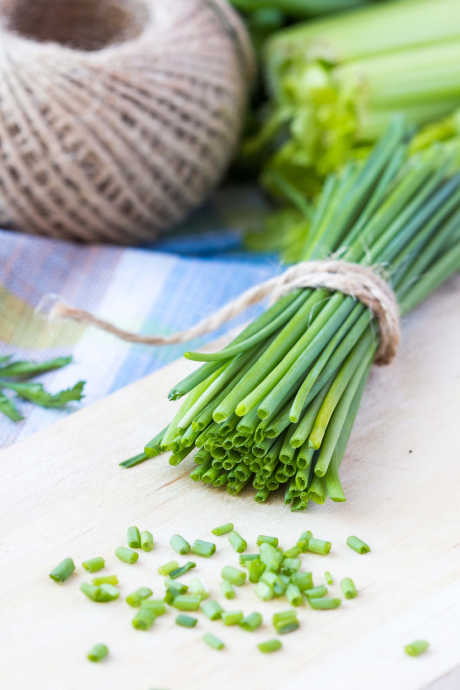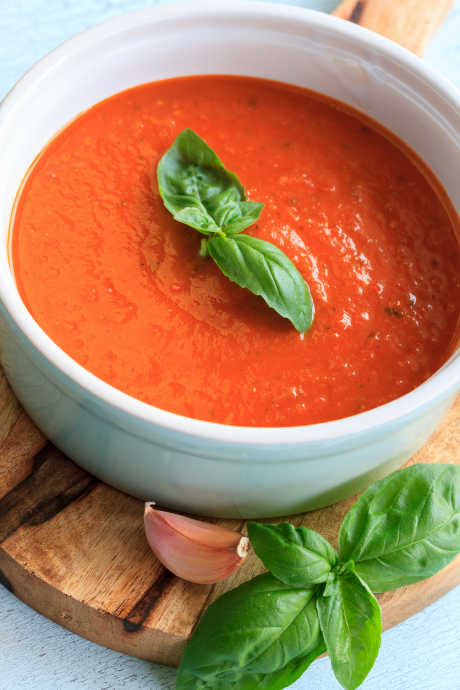5 Key Ingredients for Hearty Tomato Soup
Posted by Julie on Sep 13th 2019
We know it’s still summer, but we’re already looking forward to soup season. It’s smart to have an arsenal of foolproof soup recipes that you can whip up quickly. One of our favorites is tomato soup because it’s so simple, yet so satisfying. Pair it with sandwiches (especially grilled cheese), or a bowl of pasta, or a perfectly cooked steak. In this post, we’ll share a few tips and tricks to make your next batch of tomato soup the best it can be.
What Your Tomato Soup Needs
While we know some home cooks prefer to follow recipes, tomato soup is one of those dishes that’s ripe for improvisation. As long as you know what elements are needed for delicious tomato soup, you can tweak the details according to your taste.
1. Canned Tomatoes
Surprise! Although you may have a bounty of fresh tomatoes on your hands, canned tomatoes are better for soup. Eat fresh tomatoes raw in salads and appetizers, or even sliced on a plate with salt or balsamic vinegar. During the other nine or ten months of the year, canned tomatoes have better flavor and texture for cooking and puréeing.

You’ll even find that whole tomatoes are better suited to soup than crushed or puréed tomatoes. Fine Cooking tried a variety of tomatoes and concluded whole tomatoes taste fresher than the others. They opted for Muir Glen tomatoes, but they also encourage home cooks to experiment with different brands to determine what tastes best to you.
2. Tomato Paste
Tomatoes make up the bulk of your soup, but it’s tomato paste that helps provide more flavor. The Kitchn recommends adding it to the pan after you sauté your aromatics. As the tomato paste heats up, the flavor intensifies. Take care not to let it burn. After it darkens a bit and coats the onions and garlic, you can add the canned tomatoes and broth.
3. Aromatics

Aromatics like onions and garlic are essential ingredients in many soups, especially ones with a mild flavor base like tomato or potato soup. They help bring out that tomato taste while adding their own dimension to the flavor profile. Try adding other elements like celery, carrots, and red peppers. All of these options will complement the tomatoes.
4. Dairy
While you don’t need to turn your tomato soup into tomato cream soup, a touch of dairy will go a long way. You can add a couple tablespoons of butter or cream, or try a dollop of sour cream or crème fraîche. Any one of these will add richness without overwhelming the tomato flavor.
5. Herbs

Finally, fresh herbs can make a big difference in all sorts of soups and salads, and tomato soup is no exception. Basil is a natural choice, as is oregano. We also like chives with tomatoes because they’re alliums, like garlic and onions. Other fresh herbs to mince and sprinkle on top of your tomato soup include rosemary, thyme, and parsley. Experiment a bit to see what you like best.
Blend It Smooth
You may have already guessed that if you’re using whole tomatoes, your soup will need a trip through the blender. You also can use a food mill to purée your canned tomatoes before adding them to the pot, or you can use the edge of a wooden spoon to break up the tomatoes in the pot as they cook too.
An immersion blender is a convenient way to blend your soup right in the cooking pot. While it may not be as silky-smooth as soup whirled in a container blender, it saves you the trouble of transferring hot soup back and forth between your cooking pot and blender. Be sure to keep the bell of your immersion blender submerged so you don’t splatter soup outside the pot.
If you use a container blender to puree your tomato soup, check out these smart safety tips from Fine Cooking. Hot soup will cause steam to build up inside the blender container, so don’t fill it too full or seal the lid tightly. Instead, fill the container only halfway, and crack the lid slightly to vent the steam. Fine Cooking even recommends covering the opening with a dish towel to prevent any accidental splatters, while still allowing steam to escape.
Tomato Soup Recipes
While you can wing it with tomato soup in the same way you can with lots of other dishes, we understand if you prefer to follow a recipe. We chose three options that sound delicious to us. We hope at least one of them appeals to you too.

Ted’s Bulletin Tomato Soup
The New York Times Cooking section adapted this recipe from Ted’s Bulletin in Washington DC. We’ve eaten there ourselves, and we’re confident they make a mean tomato soup. This recipe makes eight generous servings. You may want to halve the ingredients unless you are cooking for a large group. Sugar and honey help counter the acidity of the tomatoes, as does a heaping helping of butter and half-and-half.
Fire Roasted Tomato Bisque
Don’t let the name fool you into thinking this recipe from Food & Wine will be a lot of work. Simply buy the canned tomatoes that are already fire-roasted. You can use homemade chicken stock if you want to feel like it’s worthy of being called bisque. Butter and cream give this soup a smooth richness, and aromatics from onions and garlic to vegetables like celery and carrots help broaden the range of flavors. Add croutons to each bowl, or serve with toasted cheese sandwiches.
Mark Bittman’s Tomato Soup
Mark Bittman of How to Cook Everything has his bases covered, including tomato soup. This recipe is for the purists, as there’s no butter or cream included. It also calls for tomato juice or water instead of chicken broth. But there’s plenty of all the other key elements we covered above, and you can always add a pat of butter or a splash of cream. We especially like this recipe for Mark Bittman’s sound guidance on all the steps. You can apply them to any tomato soup recipe, even if you wing it.
 Free shipping over $49
Free shipping over $49










